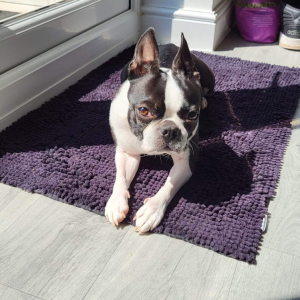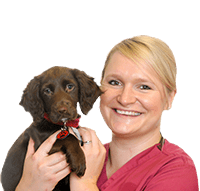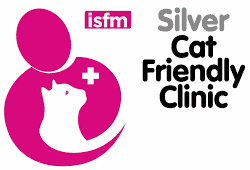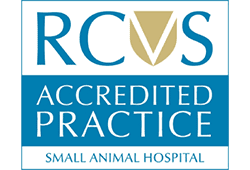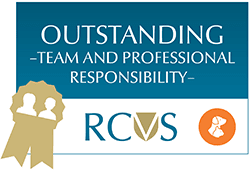A Boston Terrier is back to her energetic best after undergoing major spinal surgery here at Kentdale.
Six-year-old Bella was born with severe curvature of the spine and other spinal complications which had started to impact her mobility and ability to use her hind legs.
As a result, she was referred by her vets for expert treatment from our team, with European Specialists in Small Animal Surgery Gemma Holloway and Jan Beranek using state-of-the-art technology to stabilise Bella’s vertebrae and give her a new lease of life.
However, Gemma said they first needed to operate on Bella’s airways as she was also suffering from brachycephalic obstructive airway syndrome (BOAS), which was restricting her breathing and posed a threat under anaesthetic.
Gemma explained: “Bella was not referred for BOAS but during initial examinations, her breathing was noisy and a throat inspection confirmed it was a concurrent condition. This was a concern as patients with BOAS generally face higher risks while under anaesthetic as their airways can become obstructed due to excess tissue at the back of their throat. Treatment can also lead to significant improvement in exercise tolerance and ease of breathing, so it was agreed Bella had this surgery at the same time as an MRI scan on her spine. The MRI scan itself revealed severe thoracic kyphosis (severe curve in the middle of the back), spinal canal narrowing, spinal cord flattening, signal changes and formation of a subarachnoid cyst (brain cyst).
“Such neurological signs would result in gradually progressive paresis (muscular weakness) and ataxia (coordination and balance) of the pelvic limbs. Treatment of this type of vertebral anomaly is challenging. However, complex spinal malformations can now be treated by state-of-the-art surgery which uses 3D printing technology. A CT scan of the individual patient is used to generate a replica of the affected vertebral column and to position custom-made 3D-printed drill guides. These drill guides are designed to match the specific anatomy of each individual vertebra and follow the most ideal trajectory for implant placement. Implants (pedicle screws) are then placed in each affected vertebrae and stabilised with bone cement which is designed to stop progressive deterioration of spinal function and most patients also improve after surgery in terms of hind limbs strength and coordination.
“Bella came through surgery very well and then began physiotherapy and hydrotherapy rehabilitation to maximise her recovery. Her post-operative check eight weeks after surgery was very positive, with Bella’s owner reporting she wanted to walk for longer than she did pre-op and was overall bright and energetic.”
Owner Chloe Dove, from Thornton-Cleveleys, Lancashire, said she was initially shocked to learn the full extent of Bella’s problems but is delighted her beloved pet has made such a good recovery.
Chloe said: “Bella is like a whole new dog. She’s so much happier in herself, back to wanting to walk for miles, eager to play and is comfortable in day-to-day life. We’d always known about the arch in Bella’s back right from when she was a puppy but it was a friend who noticed Bella had started weight shifting on her back right foot. We thought it was maybe to do with a fall but when the vets examined her and explained the problems my first reaction was one of shock. That quickly turned into realisation as all the information given to us by the vets made sense considering Bella’s symptoms and her arched back.
“I was really concerned, mainly about the amount of pain Bella had been living with, and about her recovery after the spinal operation, as she’s very energetic and excitable. Kentdale were fantastic from the start and I’d absolutely recommend them. We have both been treated with kindness, respect and empathy. The whole Kentdale team eased all of my worries and nothing was ever a problem. Bella is also nervous with vets and she was treated kindly and with patience to allow maximum comfort and relaxation for her. She had physiotherapy and hydrotherapy after surgery and has also had additional training to work on calmness which I feel has given us a stronger bond and understanding of each other. I’m delighted with the outcome.”
